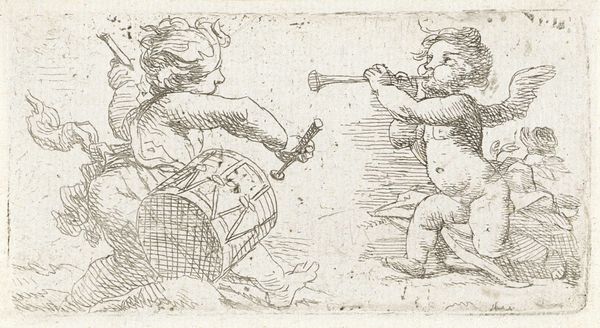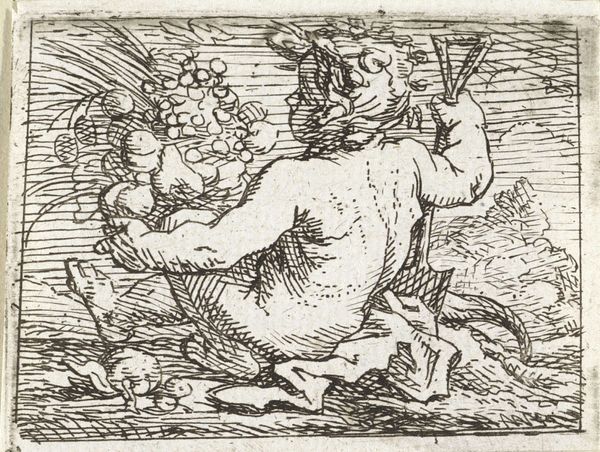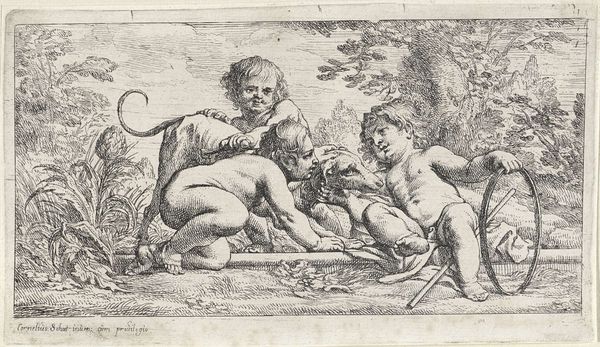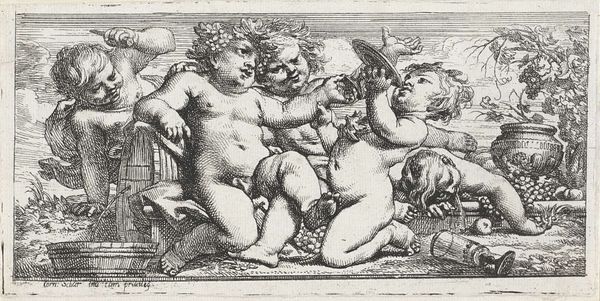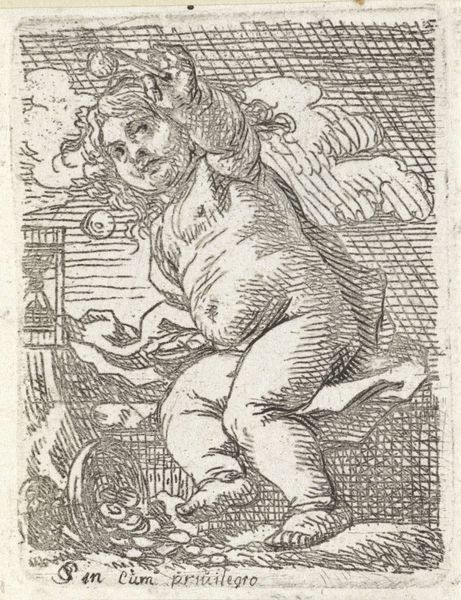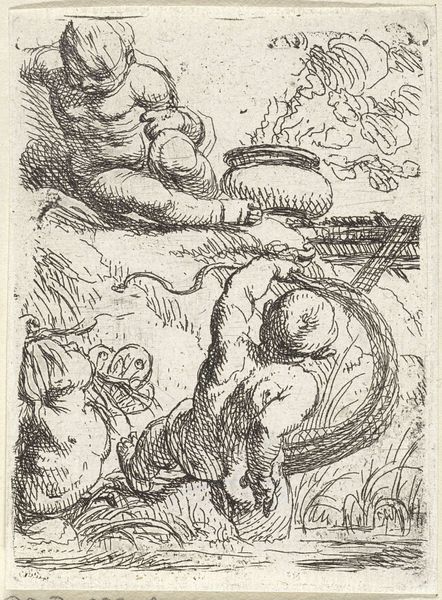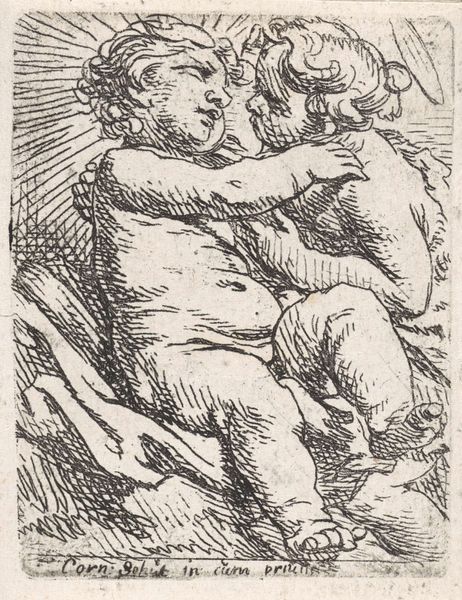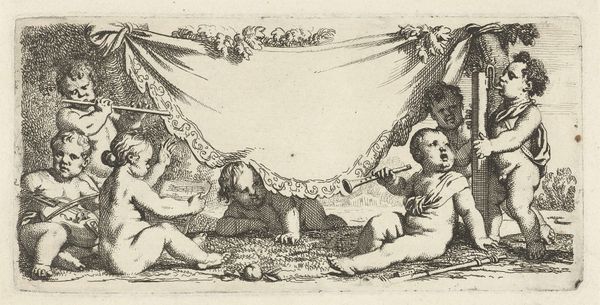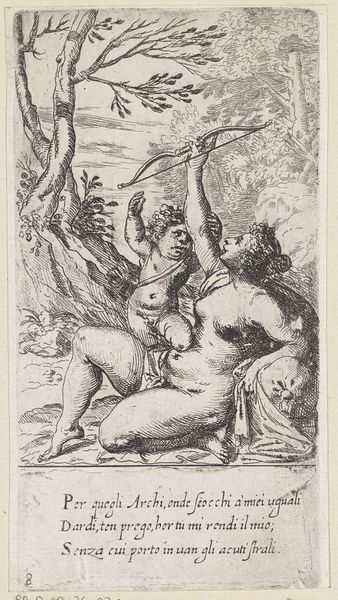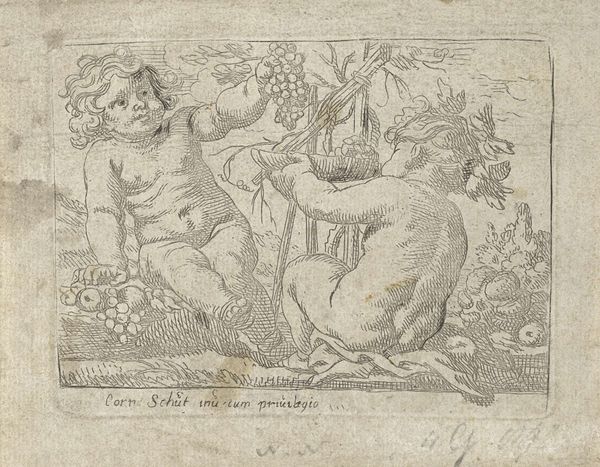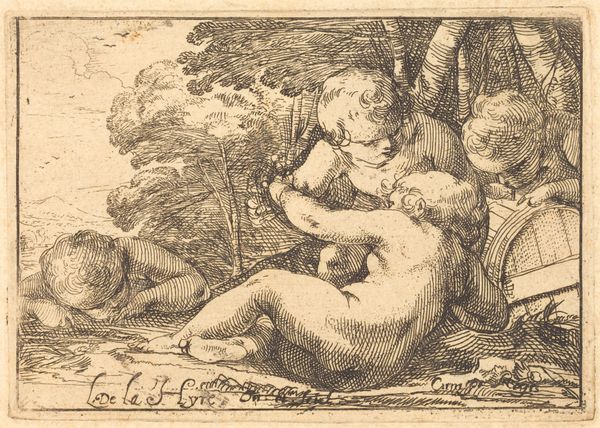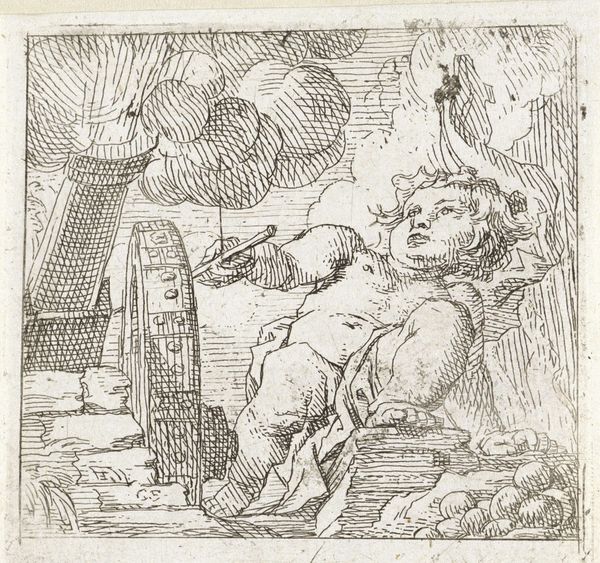
drawing, print, etching, ink
#
drawing
#
light pencil work
#
baroque
# print
#
pen sketch
#
etching
#
pencil sketch
#
figuration
#
personal sketchbook
#
ink
#
ink drawing experimentation
#
pen-ink sketch
#
pen work
#
sketchbook drawing
#
sketchbook art
#
initial sketch
Dimensions: height 42 mm, width 74 mm
Copyright: Rijks Museum: Open Domain
Cornelis Schut created this etching, "Two Wrestling Putti," sometime in the first half of the 17th century. The image depicts two winged cherubs engaged in playful combat, a common motif in Baroque art. Made in Antwerp, then part of the Spanish Netherlands, the image reflects the era’s religious and cultural climate. The Catholic Church was a major patron of the arts, commissioning works that promoted its doctrines and values. Putti, often associated with love and innocence, were frequently used in religious art to symbolize divine love or the souls of the faithful. Schut’s putti, however, are engaged in a more earthly pursuit, wrestling and grappling with one another. Understanding this print requires research into the religious and artistic conventions of the 17th-century Netherlands. By examining the cultural context in which Schut worked, we can better appreciate the nuances of his art and its place within the broader history of European printmaking.
Comments
No comments
Be the first to comment and join the conversation on the ultimate creative platform.
